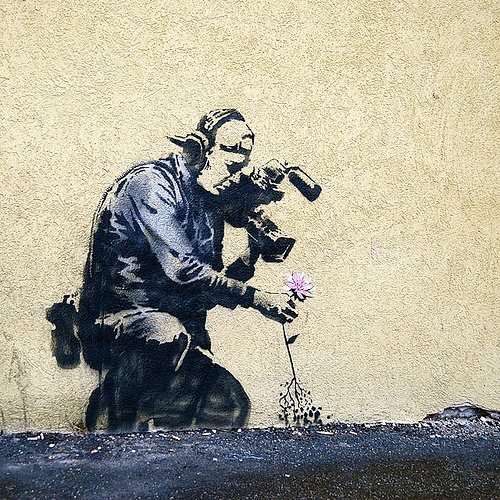This week marks another celebration of "street art" in Portland.
Now in its 10th year, street art is a highlight of the city organized by the Portland Institute for Contemporary Art's Time-Based Art Festival attracting artists of all media from around the world. This year they are hosting performers from Japan, Ethiopia and Senegal. Visual art, music and performances are all part of the mix.
For too long only "real art" -- at least that's how some folks describe it -- hung in public buildings, on corporate dining room walls or museums. Then ever so slowly it seemed "street art" became more fashionable. Maybe it started with trashcans, or dumpsters.
Who could criticize painting dumpsters?
At least that's the way a St. Louis high school student must have seen it this summer when he began painting what he called "ugly city dumpsters" he felt could use a little paint and thereby help "beatify the city." With permission from the St. Louis Street Department, a little cash donated for supplies, Jacob Schmidt rounded up 30 volunteers and went to work.
In many cities, painting electrical boxes is almost commonplace. At first, street artists took it upon themselves to find boxes that cried out for attention but are now the object of requests from the city, RFPs, and often the electric utility, sometimes with money attached. Some cities are expanding the program to include walls, storefronts of empty buildings and the like.
Having the city making the ask makes street art instantly legal. It's suddenly OK. As John Fekner, who created hundreds of environmental and conceptual outdoor works in New York, Sweden, Canada, England and Germany in the 1970s and 1980s, once said in defining "street art, its "all art on the street that's not graffiti."

Graffiti had-perhaps still has-a bad name. Yet so called "street art' is clearly gaining popularity as more and more cities, or city sponsored community groups, are holding street art festivals, asking street artists to help beatify their city with murals, sculptures and paintings on public buildings, fences, walls, viaducts, and bridges.
In Atlanta, Georgia, according to the New York Times, a group called "Living Walls" was invited by the city to literally paint the "sides of buildings, foreclosed houses and subway underpasses." Living Walls "goal is to showcase the creations, in aerosol and latex paint, of women from around the world, including Argentina, Brazil, Canada, Italy and Spain. The project, which includes lectures and parties celebrating street art, is also meant as an alternative to larger conferences, like Art Basel Miami or the Congress for the New Urbanism."
Street art and street artists have entered the mainstream as museums in some of America's largest cities are showcasing the work of JR, who won a TED prize for putting what has been described as "a human face to the most impoverished areas of the world," to Banksy, a more subversive graffiti artist whose works have been found on streets, walls and bridges of cities throughout the world, artists have been speaking out to the delight of millions.
From the graffiti in Kabul to earlier work covering the Berlin Wall to the writings on walls acknowledging democracy in Beijing -- often removed by government authorities -- people the world over have chosen in part to demonstrate some of their most poignant expressions, frustrations and thoughts by public displays of art.
Indeed, so called "street art" is the vehicle for people the world over to express themselves. It is also the vehicle that gives a community a sense of place and an identity.